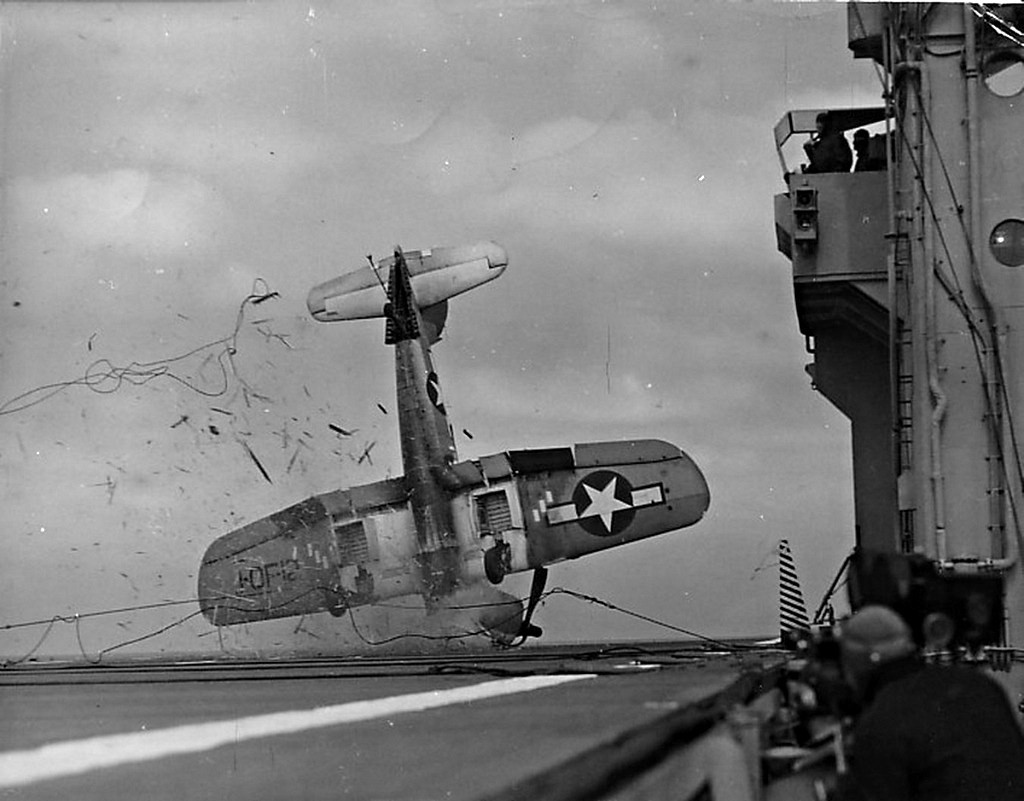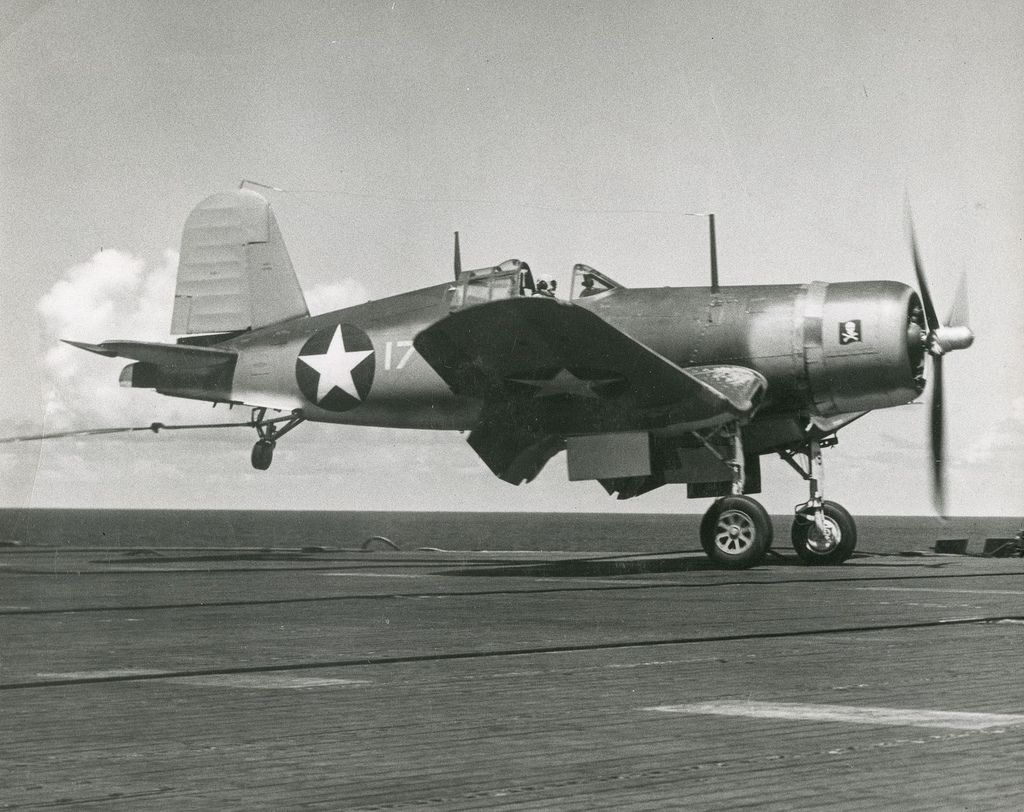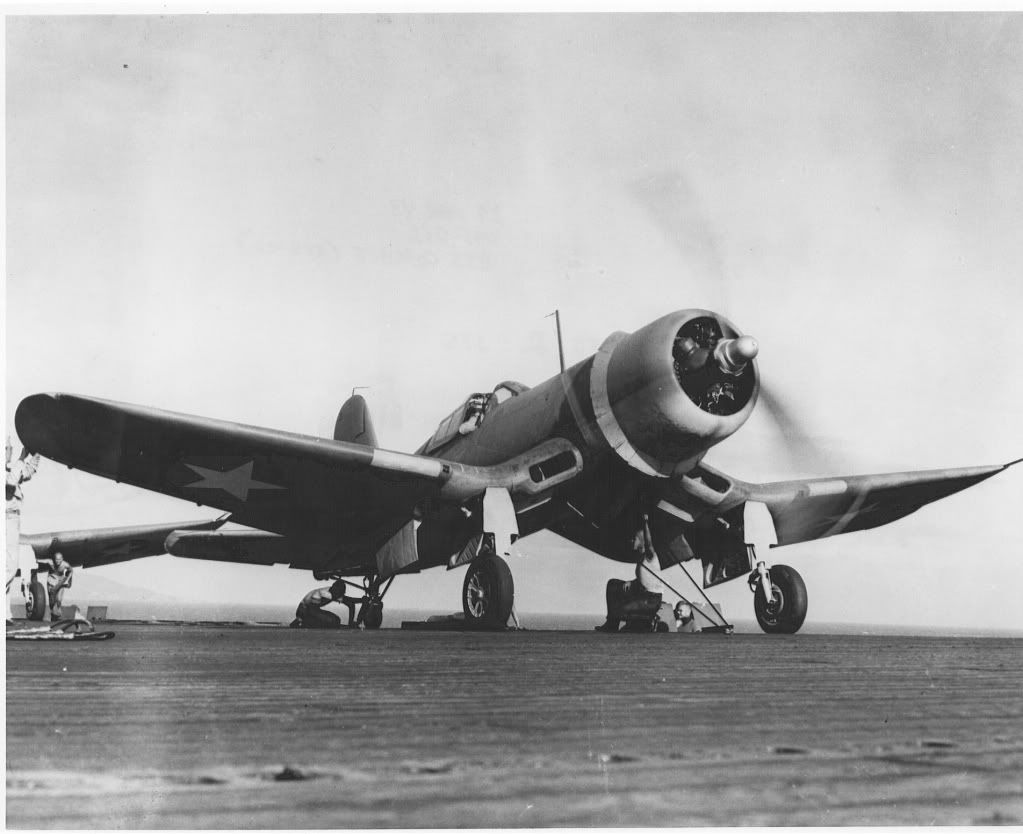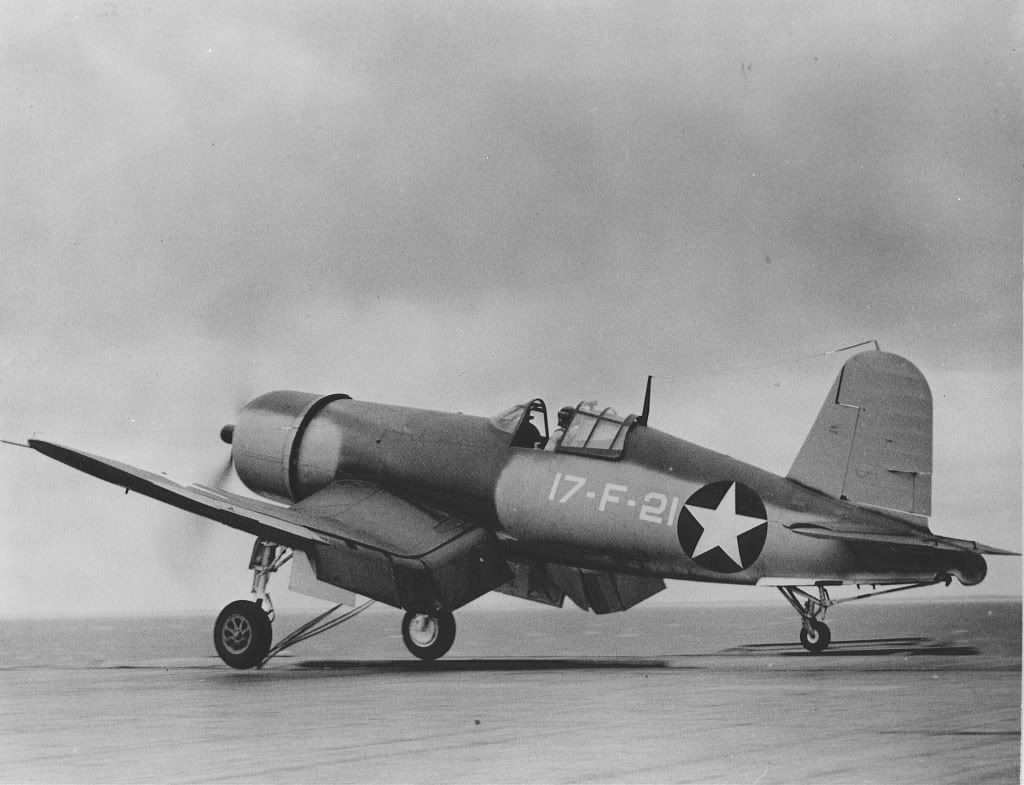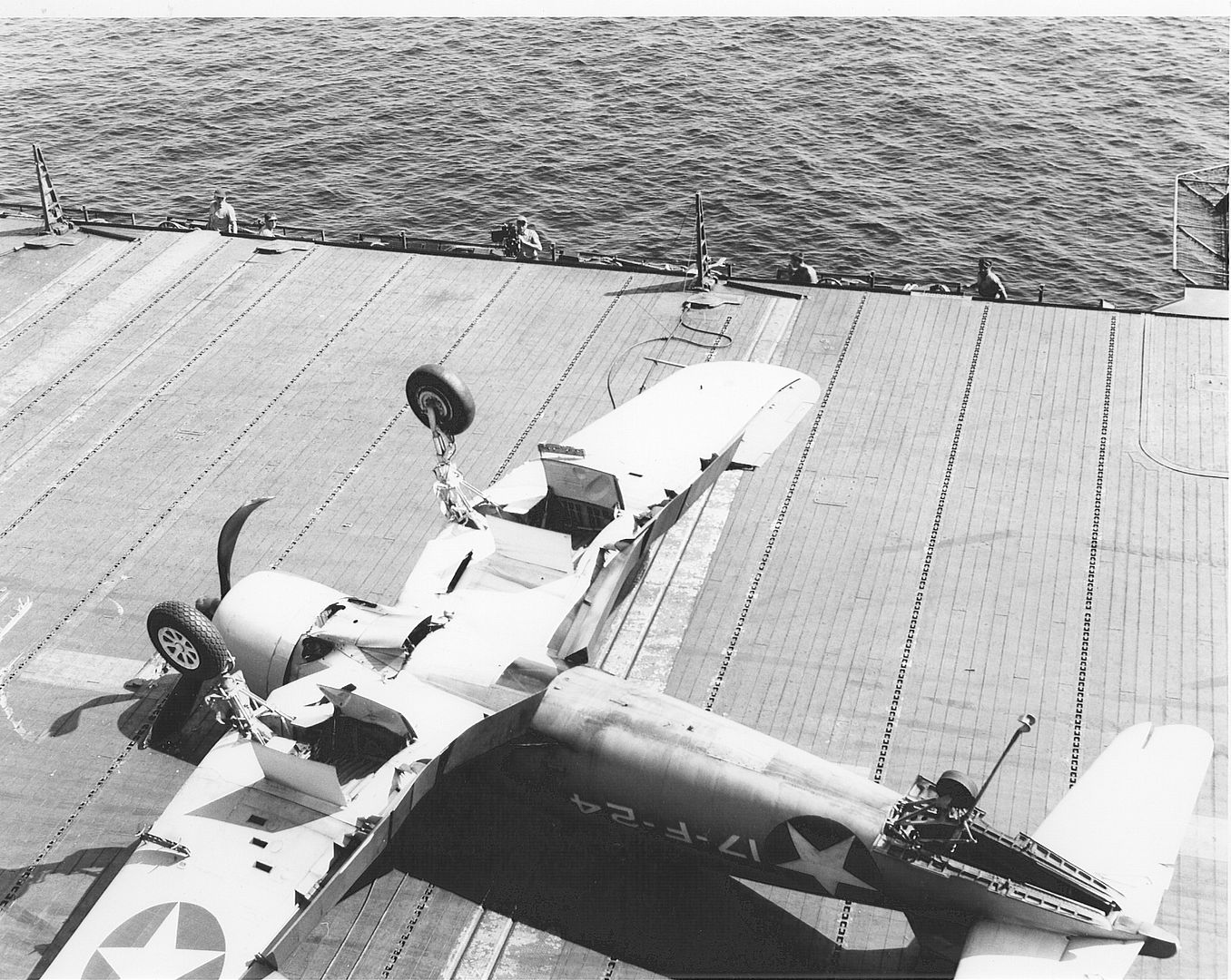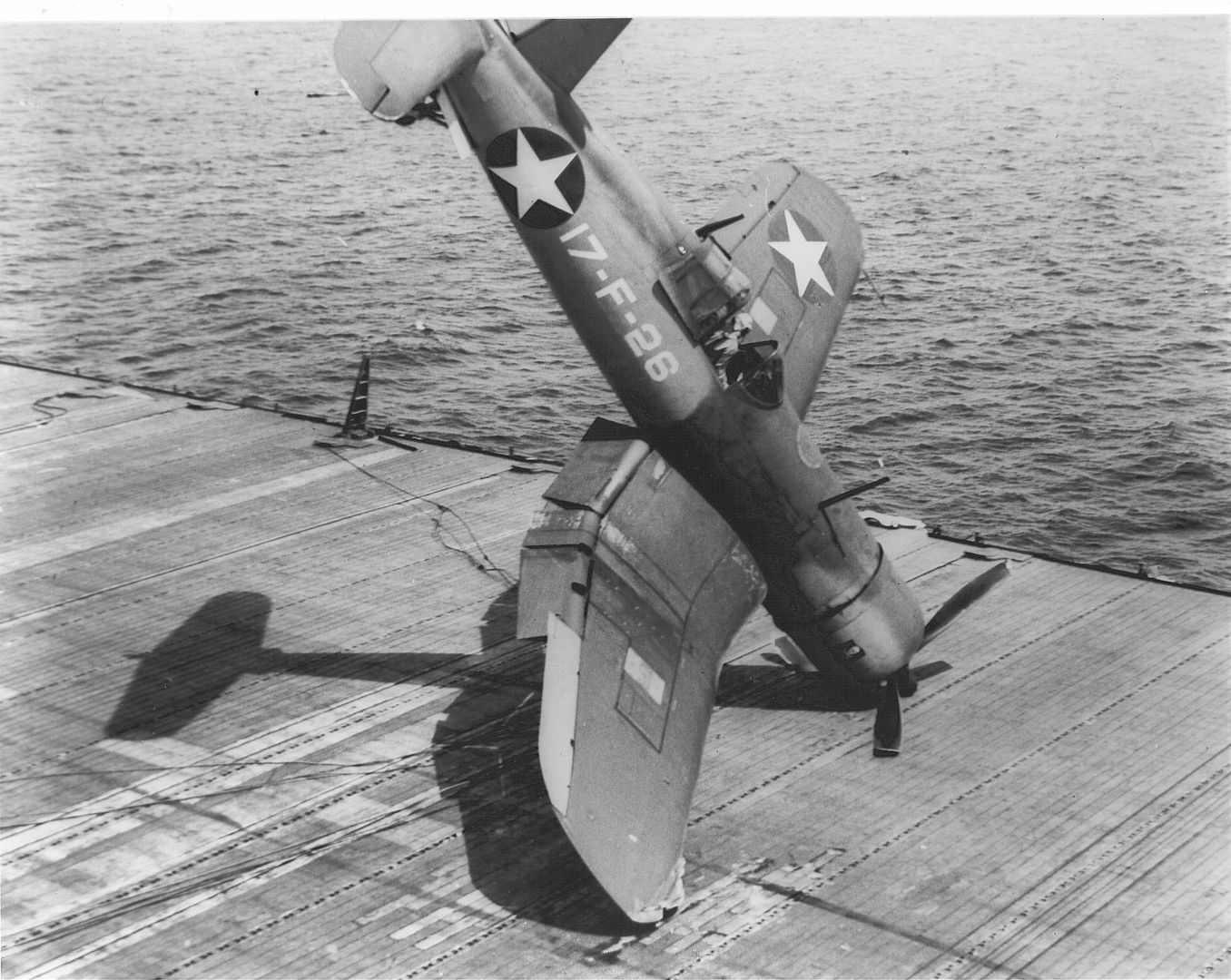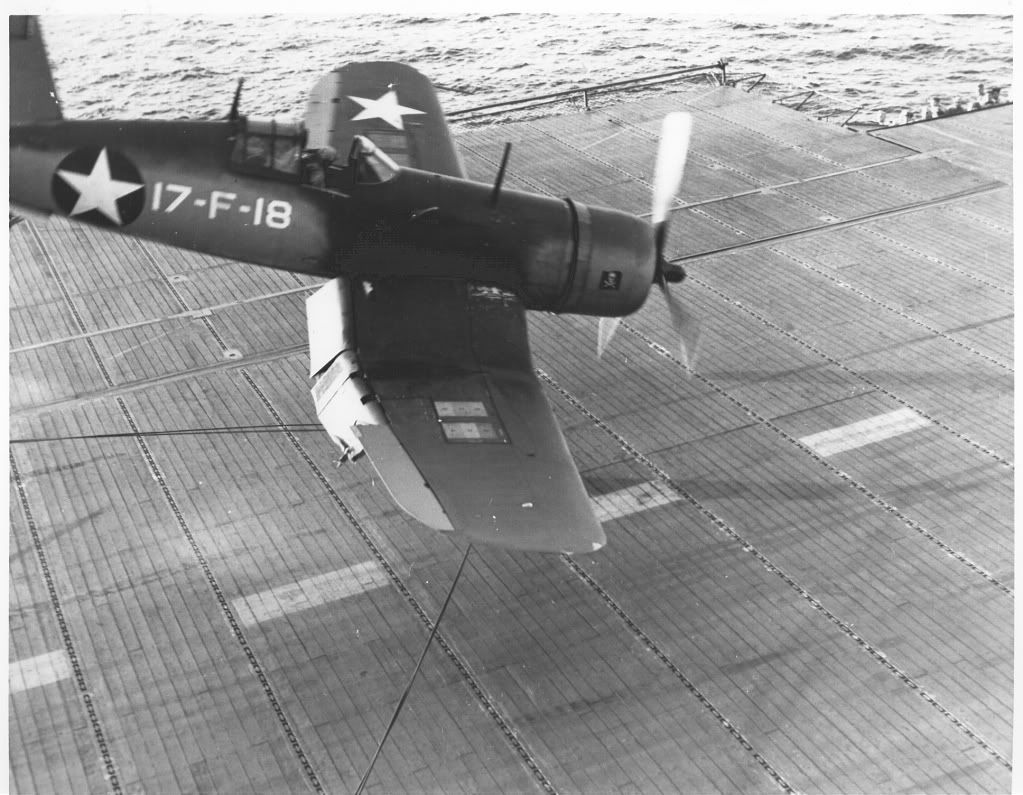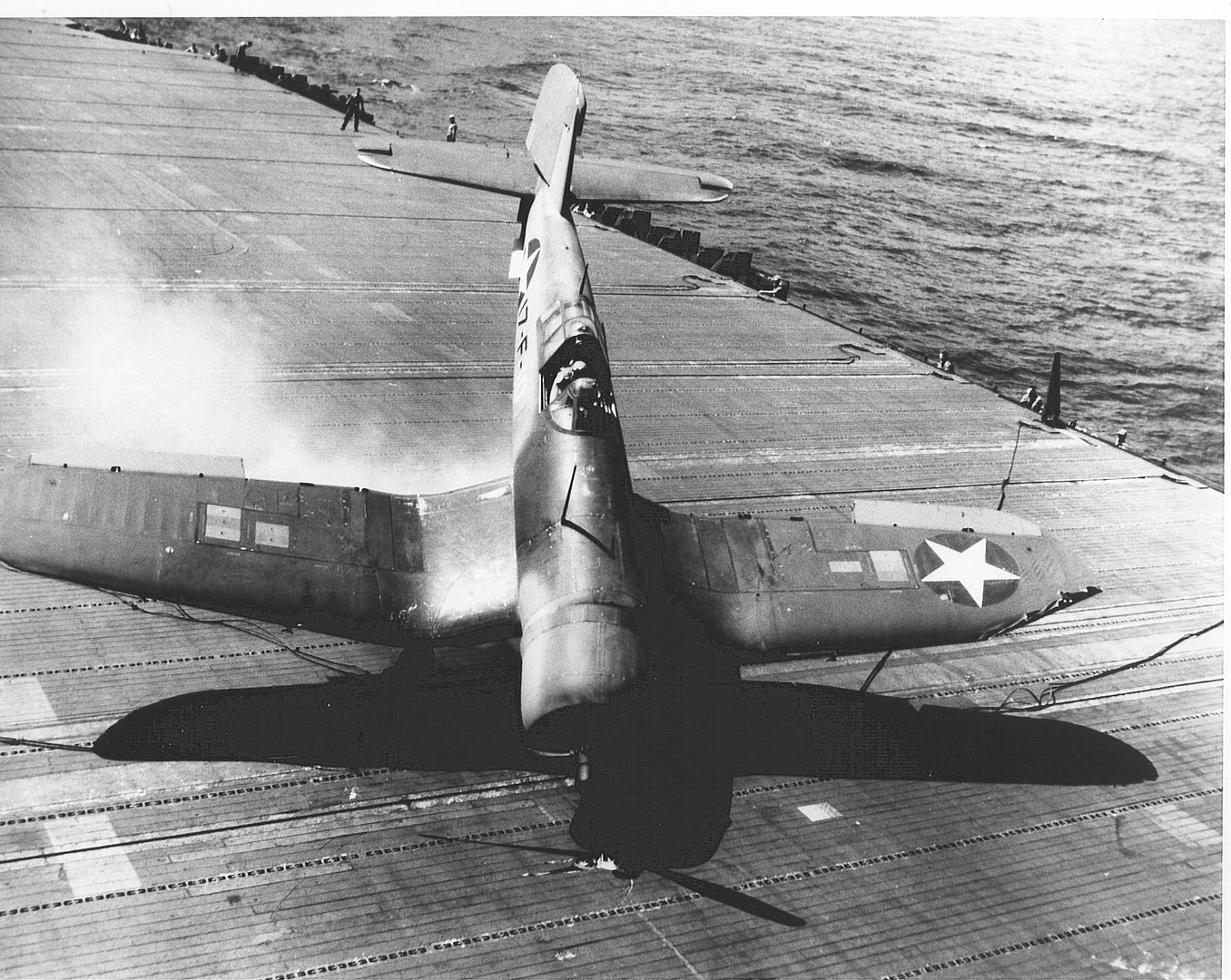. . or to put it differently, has anyone tried to splice the Racer's mods in with the warbird Corsairs? Or is Tom's FDE above superior?
Also, has anyone been able to trap the plane on an escort or light cv? I can land - crash detection on - on an Essex (eg. Michael's Yorktown or Leyte) without too much trouble, and without nosing over. However, because the Casablanca or Cabot deck is that much smaller, that big long nose of the Corsair blocks out any visual reference of the flight deck (moved the vc eye point out to the left - ie "dog view" - but didn't really help) making it VERY tough!! They did fly off of them, e.g. the USS Sicily in Korea. Respect!
Also, has anyone been able to trap the plane on an escort or light cv? I can land - crash detection on - on an Essex (eg. Michael's Yorktown or Leyte) without too much trouble, and without nosing over. However, because the Casablanca or Cabot deck is that much smaller, that big long nose of the Corsair blocks out any visual reference of the flight deck (moved the vc eye point out to the left - ie "dog view" - but didn't really help) making it VERY tough!! They did fly off of them, e.g. the USS Sicily in Korea. Respect!


